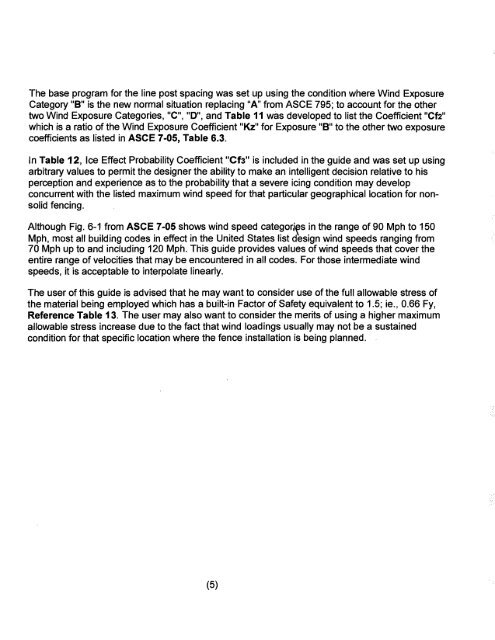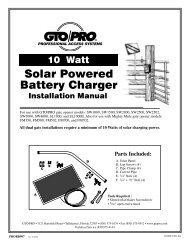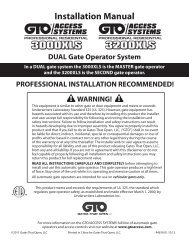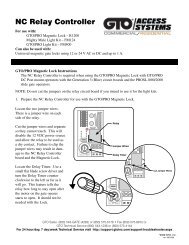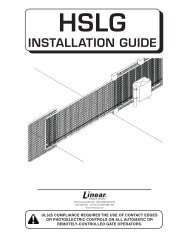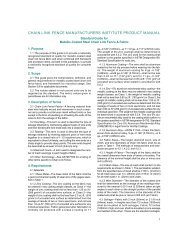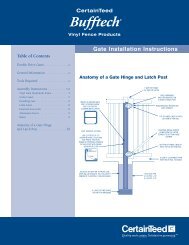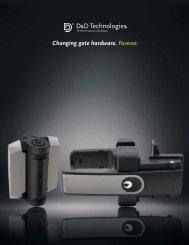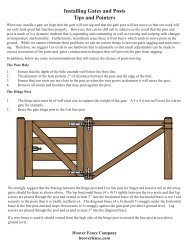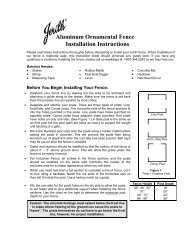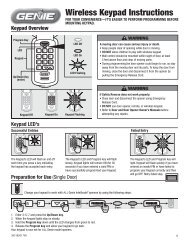Chain Link Fence Wind Load Guide for the ... - Hoover Fence
Chain Link Fence Wind Load Guide for the ... - Hoover Fence
Chain Link Fence Wind Load Guide for the ... - Hoover Fence
Create successful ePaper yourself
Turn your PDF publications into a flip-book with our unique Google optimized e-Paper software.
The base program <strong>for</strong> <strong>the</strong> line post spacing was set up using <strong>the</strong> condition where <strong>Wind</strong> ExposureCategory "B" is <strong>the</strong> new normal situation replacing "An from ASCE 795; to account <strong>for</strong> <strong>the</strong> o<strong>the</strong>rtwo <strong>Wind</strong> Exposure Categories, "C", "0", and Table 11 was developed to list <strong>the</strong> Coefficient "Cf2"which is a ratio of <strong>the</strong> <strong>Wind</strong> Exposure Coefficient "Kz" <strong>for</strong> Exposure "B" to <strong>the</strong> o<strong>the</strong>r two exposurecoefficients as listed in ASCE 7-05, Table 6.3.In Table 12, Ice Effect Probability Coefficient ICf3" is included in <strong>the</strong> guide and was set up usingarbitrary values to permit <strong>the</strong> designer <strong>the</strong> ability to make an intelligent decision relative to hisperception and experience as to <strong>the</strong> probability that a severe icing condition may developconcurrent with <strong>the</strong> listed maximum wind speed <strong>for</strong> that particular geographical location <strong>for</strong> nonsolidfencing.Although Fig. 6-1 from ASCE 7-05 shows wind speed categor;rs in <strong>the</strong> range of 90 Mph to 150Mph, most all building codes in effect in <strong>the</strong> United States list design wind speeds ranging from70 Mph up to and including 120 Mph. This guide provides values of wind speeds that cover <strong>the</strong>entire range of velocities that may be encountered in all codes. For those intermediate windspeeds, it is acceptable to interpolate linearly.The user of this guide is advised that he may want to consider use of <strong>the</strong> full allowable stress of<strong>the</strong> material being employed which has a built-in Factor of Safety equivalent to 1.5; ie., 0.66 Fy,Reference Table 13. The user may also want to consider <strong>the</strong> merits of using a higher maximumallowable stress increase due to <strong>the</strong> fact that wind loadings usually may not be a sustainedcondition <strong>for</strong> that specific location where <strong>the</strong> fence installation is being planned.(5)


